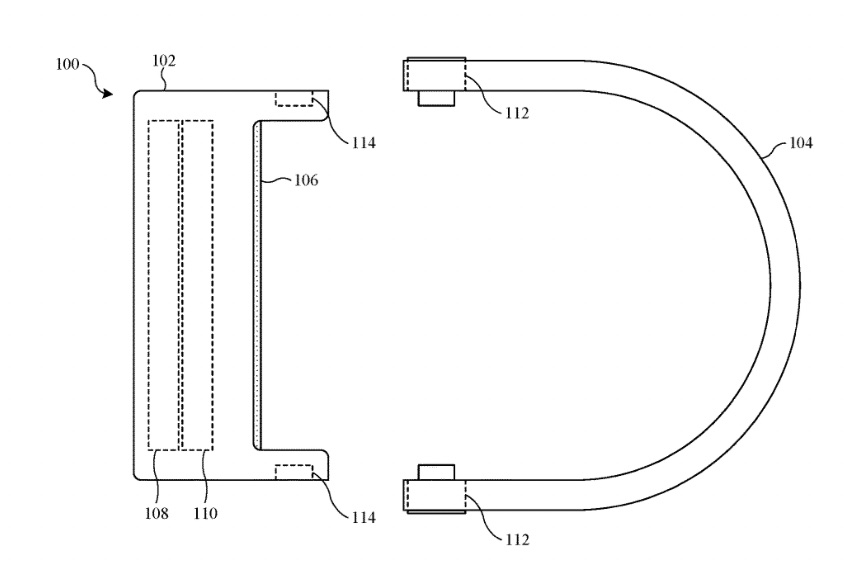Apple has been granted a patent (number US 11789276 B1) for “pivoting connectors” for the upcoming Vision Pro. It’s designed to help deal with the weight of the head-mounted display.
The US$3,499 (and higher) Spatial Computer will arrive in early 2024. Apparently, it will only be available in limited quantities at first. Currently, the Vision Pro weighs about a pound. Apple is reportedly considering addressing this on the first model with an over-the-head strap.
About the patent
In the patent Apple says that head-mounted devices typically track the position and/or orientation of the device, and generate and present the content in accordance with the tracked position and/or orientation of the device. When computer-generated reality content is displayed to a user by a head-mounted device, the device is often supported by user’s head.
Examples of support structures that have been used for this purpose include helmets, eyeglass-type frames, rigid headbands, and flexible headbands. However, head-mounted devices can still put a strain on a user’s neck. Apple’s idea is for a Vision Pro that includes a device housing and a headband configured to support the device housing with respect to the user.
Summary of the patent
Here’s Apple’s abstract of the patent: “A head-mounted device includes a device housing and a headband that is configured to support the device housing with respect to the user. A first connector part is connected to the headband, wherein the first connector part includes a first electrical connector portion. A second connector part is connected to the device housing, wherein the second connector part includes a second electrical connector portion.
“The first connector part and the second connector part are movable between a connected position, in which the first electrical connector portion is in engagement with the second electrical connector portion, and a disconnected position, in which the first connector part is spaced from the second connector part and the first electrical connector portion is not in engagement with the second electrical connector portion. The headband is able to rotate with respect to the device housing in the connected position.”
Article provided with permission from AppleWorld.Today




